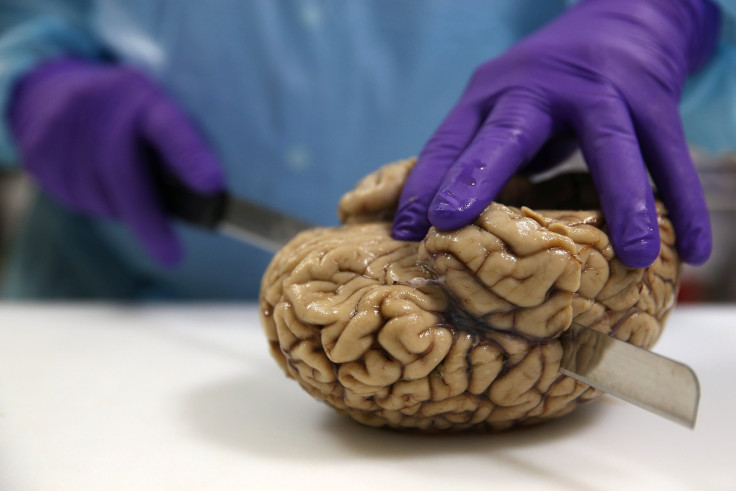This Is What Alzheimer’s Disease Does To The Brain

Alzheimer’s disease (AD) is a progressive brain disease and the 6th leading cause of death in the U.S. While symptoms of AD such as memory loss and impaired judgement are widely recognized, we know less about what the disease does to the brain. Science still has a long way to go when it comes to understanding AD, but here’s what we know so far.
Cell Death And Disruptions
Alzheimer’s disease is characterized by the formation of “plaques” and “tangles” in the brain. According to The National Institutes of Health, these protein buildups can impair connections between nerve cells called neurons, and even cause neuron death. In normal brain tissue, a protein called tau stabilizes microtubules, a key part of cell structure. But in a brain with AD, protein strands become tangled, making it difficult to transport key nutrients throughout the brain. Without nutrients, brain cells will die.
These disrupted connections and cell deaths cause many of AD’s characteristic symptoms. Scientists still aren’t sure whether plaque buildups and tangles cause AD, or whether the irregular clusters occur as the disease progresses, Healthline reported.
In addition to memory, learning and thinking skills also requier efficient transmissions between brain cells. Disruptions and deaths of brain cells also causes impairments in these two critical functions.
Brain Shrinkage
In addition, AD can cause the surface layer that covers the cerebrum to shrink. This shrinkage can directly affect a patient's ability to plan ahead, recall facts, and concentrate.
Unsurprisingly, this brain damage often starts in the hippocampus, the area of the brain associated with memory formation, The NIH reported. Increased cell death and disconnection in the hippocampus can cause brain tissue to shrink substantially, eventually affecting brain function. However, researchers believe that this initial damage can begin as early as a decade before any symptoms start.
While AD causes the shrinkage of many parts of the brain, the ventricles, or chamber within the brain that contains cerebrospinal fluid, become noticeably enlarged, Bright Focus reported. This gives the brain of a person with AD a distinctive and different look than that of a healthy brain.
Inflammatory Response
The brain’s immune system recognizes brain cell death as injury. As a result, it causes an inflammatory reaction. Although inflammation is meant to protect the body against infection, the longer it goes on the more likely it is to cause damage to healthy cells. According to The Dana Foundation, chronic inflammation caused by AD can further damage brain cells.
Some scientists even suggest that inflammation in the brain may be a trigger for AD, as having a head injury in the past can increase the risk of developing this condition. In addition, systemic infection, which also causes inflammation, accelerates the disease, while other studies show that older people who use anti-inflammatory drugs regularly have significantly lower rates of Alzheimer’s.
Copyright Medical Daily News Service. All rights reserved.




















